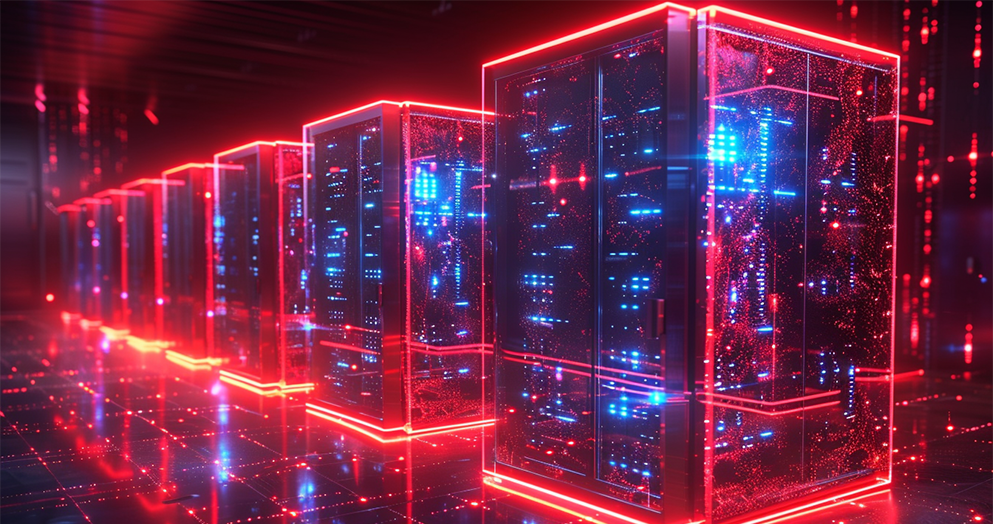Table of contents
Every few months, a new AI model lifts our expectations. They are bigger, faster and smarter than anything that came before it. And every time, the same question resurfaces: “How are these models trained?”
Such large models are trained on massive GPU clusters. What we’re witnessing today is not just a race for better algorithms, it is a race for better compute. Today’s AI breakthroughs are directly tied to the hardware running them and more than that, building and choosing the right GPU clusters capable of supporting large workloads.
In this blog, we talk about GPU clusters and how you can select the right one for the AI.
What are GPU Clusters
A GPU cluster is a group of interconnected GPUs that work together as a high-performance computing system. Instead of relying on a single GPU, these clusters consist of multiple GPUs (often across many servers) to deliver massive parallel processing power for AI workloads.
GPU clusters accelerate tasks like model training, fine-tuning, inference and data analytics by distributing the work across many GPUs simultaneously. With shared networking, storage and orchestration layers, GPU clusters let organisations run large-scale AI workloads that would be too slow or too costly to complete on a single machine.
Why a Single GPU is Not Enough
It doesn’t take long for anyone working with modern AI to realise one truth: a single GPU, no matter how powerful will eventually tap out. Models are growing faster than hardware can keep up with, datasets are exploding into petabyte territory and training timelines that once took weeks now need to be compressed into days. A single GPU doesn’t have the memory, bandwidth or compute throughput to support the scale of modern AI.
Large models demand parallelism, not just performance. Their parameters must be split across multiple GPUs. Their training steps must be synchronised across nodes. Their data pipelines must feed thousands of processors at once. This is why GPU clusters exist.
For example, when Meta trained Llama 2 and Llama 3, they didn’t use a few dozen GPUs. They used 24,576 NVIDIA Tensor Core H100 GPUs. What enabled the Llama family was not just GPU quantity but the coordination of these GPUs through an optimised cluster. Meta’s GPU clusters that trained Llama 2 and Llama 3 relied on advanced networking, scheduling recovery mechanisms and high-throughput storage for training without bottlenecks.
If any piece of this ecosystem was slow, under-optimised or poorly designed, the GPUs would sit idle, wasting millions of dollars in compute. Hence, the lesson is clear:
Training the world’s best models is not just about having GPUs. It is about optimising the entire GPU cluster stack with compute, networking and storage working in perfect alignment.
This applies to everyone, not just tech giants like Meta or OpenAI. No matter if you’re training a mid-sized foundation model or running enterprise-grade inference, cluster optimisation determines your speed, performance and ability to scale. GPU clusters are built to help AI operate at its true potential.
How to Choose Your GPU Cluster
Choosing the right GPU cluster is no longer a simple hardware decision. Your choice determines how fast you can innovate, scale, secure your data remains and how much value you extract from AI. Here are the key considerations every organisation should evaluate before choosing a GPU cluster:
Scalability for Growing AI Workloads
Your AI workloads will grow and your cluster should too. Look for GPU clusters designed for scaling, allowing you to start small and expand as your models and datasets grow. A scalable cluster ensures you can handle larger models, more experiments and higher inference volumes without re-architecting your entire system.
Modern GPU Architectures
The GPU you choose will define the limits of your training and inference performance. You must prioritise clusters powered by advanced GPUs such as:
- NVIDIA HGX H100 for high-throughput LLM training and generative AI workloads
- NVIDIA HGX H200 with expanded HBM3e memory is ideal for data-intensive RAG and fine-tuning
- NVIDIA Blackwell GB200 NVL72/NVL36 (upcoming) for next-generation, trillion-parameter AI
These modern GPUs deliver higher tensor compute, faster interconnect speeds and better memory bandwidth.
High-Performance Networking and Fast Storage
A GPU cluster is only as fast as the data feeding it. Look for:
- NVIDIA Quantum InfiniBand
- NVLink or NVSwitch for GPU-to-GPU communication
- NVMe and NVMe storage for ultra-fast data access
Managed Services and Kubernetes
Operating multi-GPU clusters manually is complex. Kubernetes provides an orchestration layer that simplifies everything, from deployment to scaling to scheduling. Your provider should offer fully managed Kubernetes support for automated scaling and resource optimisation.
Compliance, Data Sovereignty and Security
AI workloads now involve sensitive financial data, healthcare information, intellectual property and regulated datasets. Your GPU cluster must therefore meet strict security and compliance requirements. You must look for:
- Data sovereignty compliant provider
- Hosting that complies with GDPR and local regulations
- Complete tenant isolation
- Encryption in transit and at rest
- Detailed audit trails and private access controls
Deployment Flexibility: Private, Public or Hybrid
Different workloads require different environments. Choose a provider that allows you to deploy GPU clusters:
- Privately for highly regulated or sensitive datasets
- Hybrid for balancing control, performance and cost
- Public for rapid experimentation and general workloads
NexGen Cloud: Sovereign, Secure and High-Performance GPU Clusters for Enterprise AI
When building production-grade AI, enterprises need more than compute. They need trust, sovereignty and infrastructure built for real-world scale. NexGen Cloud delivers exactly that through its sovereign, secure and performance-optimised AI Cloud environment.
Our Sovereign AI cloud offers:
- Single-tenant deployments for complete hardware and data isolation
- EU/UK-based hosting operating strictly under domestic jurisdiction
- Private access controls and detailed, enterprise-grade audit trails
- Enterprise NVIDIA GPU clusters, including NVIDIA HGX H100, NVIDIA H200, and upcoming NVIDIA Blackwell GB200 NVL72/36
- NVIDIA Quantum InfiniBand networking for ultra-low-latency distributed training
- High-performance NVMe storage for reliable, high-throughput data pipelines
Our Sovereign AI Cloud offers enterprise-grade performance and can be deployed anywhere you need it. We work closely with you to ensure every workload meets your compliance obligations, while providing resources that aren’t restricted by hyperscaler policies or limitations.
FAQs
What is the difference between a GPU and a GPU cluster?
A GPU is a single processor designed for parallel computation, ideal for AI tasks like training and inference. A GPU cluster, on the other hand, combines multiple GPUs—often across many servers—into a unified, high-performance system. This setup delivers far greater compute power, memory capacity, and parallelism, enabling large-scale AI workloads that a single GPU cannot handle.
Why are GPU clusters essential for training modern AI models?
Modern AI models can contain billions or even trillions of parameters, which far exceed the memory and compute limits of a single GPU. GPU clusters allow parameter sharding, distributed training, and parallel data processing. Without clusters, training would be too slow, too expensive, or simply impossible due to hardware limitations.
What bottlenecks can slow down a GPU cluster?
The most common bottlenecks are networking latency, insufficient storage throughput, poor data pipeline design, and inefficient scheduling. Even powerful GPUs can sit idle if they are waiting for data or synchronisation signals. This is why optimised networking (such as NVIDIA Quantum InfiniBand), NVLink/NVSwitch interconnects, and high-speed NVMe storage are essential for cluster performance.
Are GPU clusters secure enough for regulated industries?
Yes, when deployed correctly. Enterprises should choose clusters that offer single-tenant isolation, encryption in transit and at rest, private networking, and data-sovereign hosting. Providers like NexGen Cloud also offer EU/UK-based environments and detailed audit trails to help organisations meet GDPR and other regulatory requirements.
Can GPU clusters be deployed in private, public or hybrid setups?
Absolutely. Organisations with highly sensitive or regulated data often choose private or on-prem deployments. Public cloud GPU clusters are ideal for rapid experimentation and scalable workloads. Hybrid models give you the best of both, strict control for sensitive operations and flexible capacity for bursts of compute demand. NexGen Cloud supports all three deployment models.

